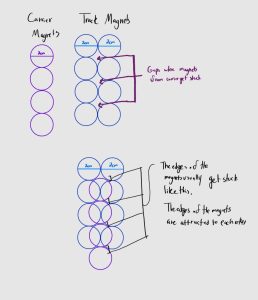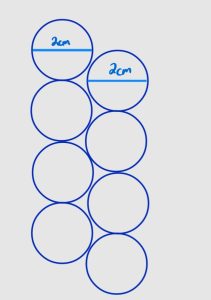Mandatory Lab (4 hr.)
- Met with professor and TA to discuss recent design report
- Discussed with the team about work distribution
Design Research and Self-Time (8 hr.)
- Worked on the speed-up coil
- Looked more into how to interpret readings from Linear Hall Effect Sensor
- Readings from a magnet depending on distance
- Readings from speed-up coils
Progress:
We started looking into how to interpret the readings from the Linear Hall Effect. At first, we had difficulty interpreting the data, but a discussion with the professor cleared up the confusion. I then wanted to see what the fixated readings from a single magnet look like depending on how far the magnet is from the sensor. At first, when looking at the readings from the magnet with the professor, I was confused about why the readings were decreasing, as they should have increased from the normal base rate of 510, indicating no magnetic field. However, after further research, I learned that it depends on the polarity or the side of the magnet facing the sensor. So, for my individual research with the sensor, I made sure to collect data from both sides of the magnets. The following are the data that I collected:
Linear Hall Effects Readings:
(Same polarity)
3 inches away: 511
2 inches away: 514
1 inches away: 534
.5 inches away: 600
.25 inches away: 745
(Opposite polarity)
3 inches away: 509
2 inches away: 507
1 inches away: 491
.5 inches away: 416
.25 inches away: 284
From this, it’s clear to see that we need to take distance into account if we want to get a clear, distinct change in magnetic field readings when the carrier is running on the track when the carrier is approaching a speed-up coil, etc.
I also worked with Myles on improving the speed-up coil since, for some reason, it decided to no longer work from the first time I created them. We made two new designs for the solenoids with different turns and lengths. We also made sure to find the calculations of these solenoids and share them with the professor and the TA to make sure we were approaching this correctly. After consulting with the professor and clarifying measurement and data, we realized that we were not generating as much magnetic field as we actually anticipated, and we needed to look into incorporating new coil designs.
Schedule:
Since we recently changed our schedule, we are currently on track with the new schedule.
Next Week’s Schedule:
Create new solenoid coils with stronger magnetic field output and implement them into the track to test propulsion with the carrier. Since Myles and I are away at the NSBE National Convention, we will put our complete effort into finalizing these coils. The only thing left for our group is finalizing the track and carrier design and finally printing them.




